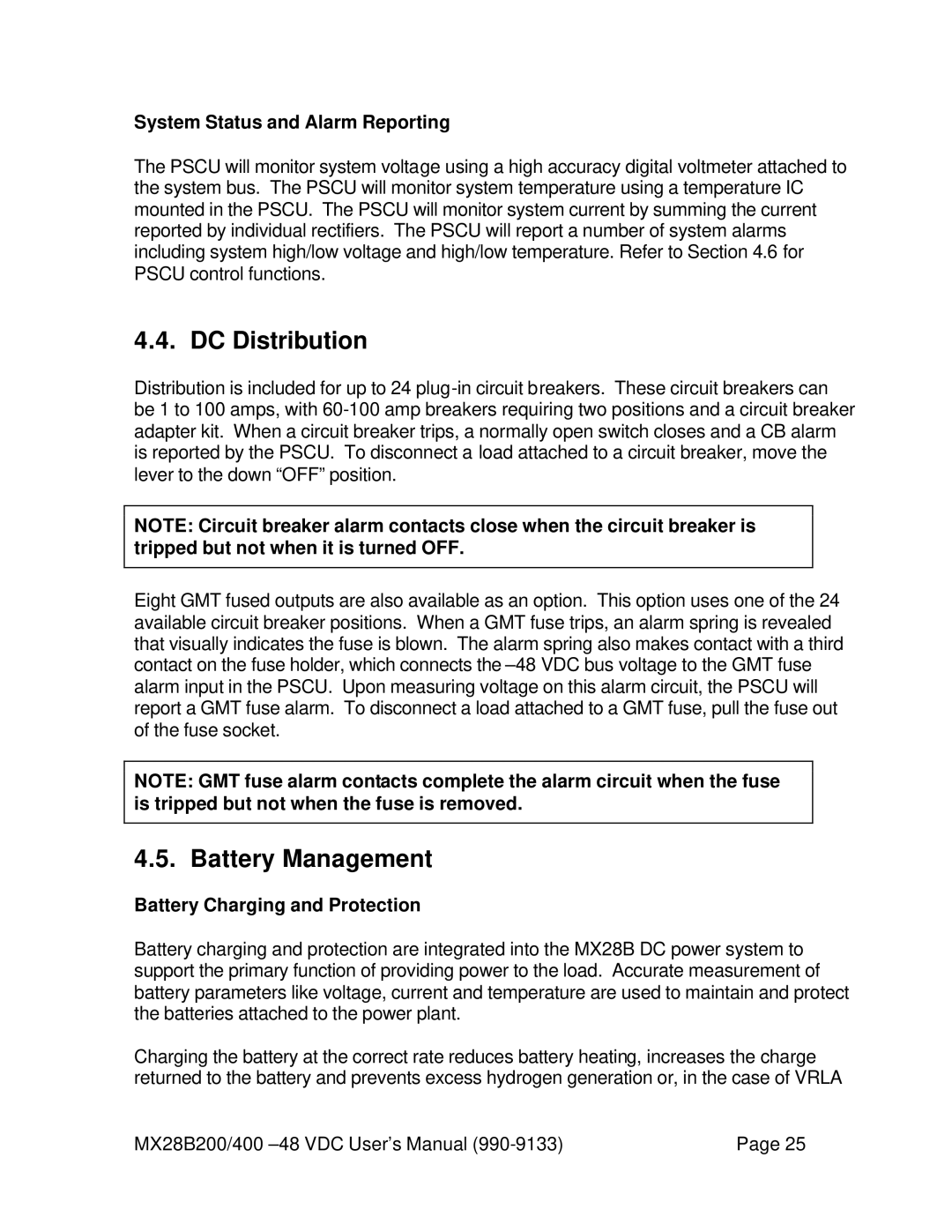
System Status and Alarm Reporting
The PSCU will monitor system voltage using a high accuracy digital voltmeter attached to the system bus. The PSCU will monitor system temperature using a temperature IC mounted in the PSCU. The PSCU will monitor system current by summing the current reported by individual rectifiers. The PSCU will report a number of system alarms including system high/low voltage and high/low temperature. Refer to Section 4.6 for PSCU control functions.
4.4. DC Distribution
Distribution is included for up to 24
NOTE: Circuit breaker alarm contacts close when the circuit breaker is tripped but not when it is turned OFF.
Eight GMT fused outputs are also available as an option. This option uses one of the 24 available circuit breaker positions. When a GMT fuse trips, an alarm spring is revealed that visually indicates the fuse is blown. The alarm spring also makes contact with a third contact on the fuse holder, which connects the
NOTE: GMT fuse alarm contacts complete the alarm circuit when the fuse is tripped but not when the fuse is removed.
4.5. Battery Management
Battery Charging and Protection
Battery charging and protection are integrated into the MX28B DC power system to support the primary function of providing power to the load. Accurate measurement of battery parameters like voltage, current and temperature are used to maintain and protect the batteries attached to the power plant.
Charging the battery at the correct rate reduces battery heating, increases the charge returned to the battery and prevents excess hydrogen generation or, in the case of VRLA
MX28B200/400 | Page 25 |
